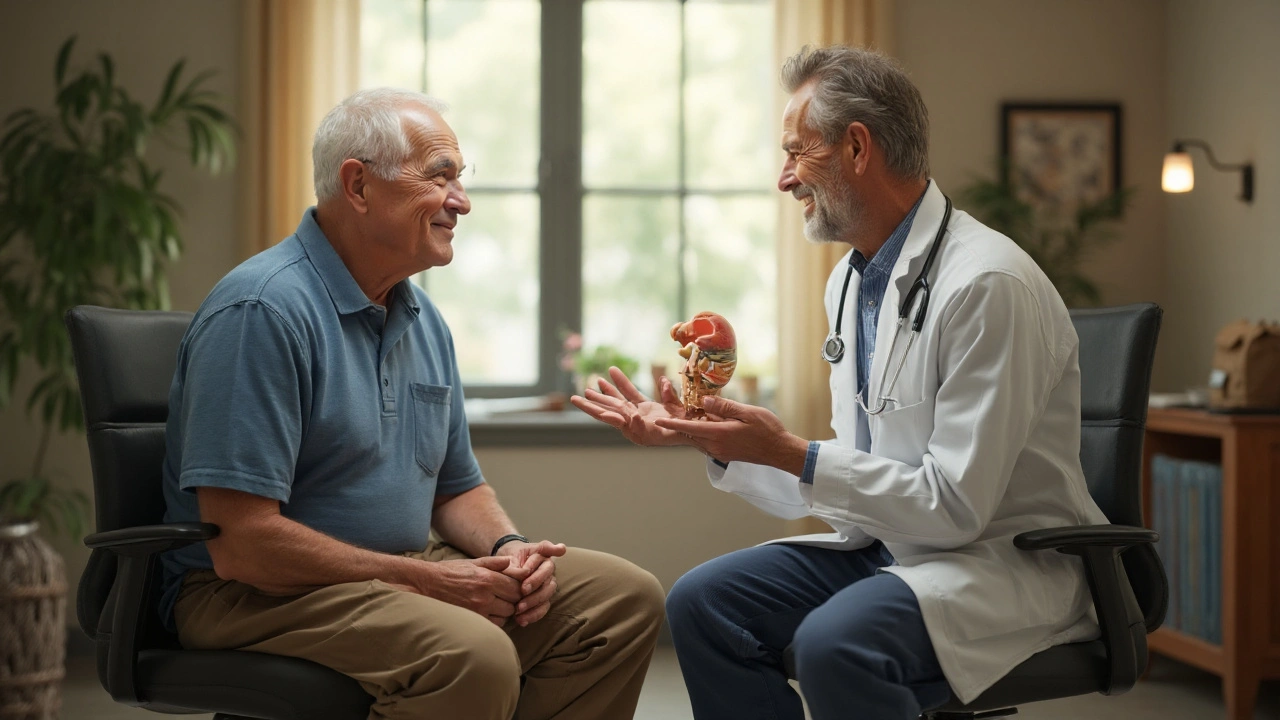Prostate Health: What You Need to Know
Feeling a frequent urge to pee or noticing a weak stream? Those could be early signs your prostate needs attention. The prostate is a small gland that helps make semen, and it can cause real discomfort if it gets enlarged or inflamed. Knowing the basics lets you catch problems before they interfere with daily life.
Common Issues & How to Spot Them
Most men notice changes after age 50, but younger guys can have trouble too. The three big culprits are benign prostatic hyperplasia (BPH), prostatitis, and prostate cancer. BPH is a non‑cancerous growth that squeezes the urethra, leading to nighttime trips, dribbling, or a constant feeling of not emptying the bladder. Prostatitis is an inflammation, often from infection, and can bring pain in the groin, fever, or painful ejaculation. Prostate cancer is the least common of the three, but it’s the most serious. Early warning signs include blood in urine or semen, persistent pain, and a steadily rising PSA level.
PSA (prostate‑specific antigen) testing is a simple blood draw that helps doctors check for abnormal growth. A single high number doesn’t mean cancer, but tracking trends over time can guide further checks like an ultrasound or biopsy.
Everyday Steps to Keep Your Prostate Happy
Diet matters more than you think. Foods rich in lycopene—think tomatoes, watermelon, and pink grapefruit—have been linked to lower prostate‑cancer risk. Add cruciferous veggies like broccoli and kale for their protective antioxidants. Limit red meat and processed meats; they can raise inflammation levels.
Staying active is another easy win. Regular walks, cycling, or light jogging improve circulation and help keep the gland from swelling. Aim for at least 150 minutes of moderate exercise each week.
Hydration is key, but don’t overdo it right before bedtime if you’re prone to night‑time bathroom trips. Spread water intake throughout the day and cut back on caffeine or alcohol in the evening.
If you’re overweight, shedding a few pounds can reduce pressure on the pelvic area and lower PSA levels. Even modest weight loss—5‑10 % of body weight—makes a difference.
Stress doesn’t just affect your mood; it can tighten pelvic muscles and worsen urinary symptoms. Try simple breathing exercises, short meditation sessions, or yoga poses that relax the lower back and hips.
Regular check‑ups keep you ahead of trouble. Talk to your doctor about when to start PSA screening—most guidelines suggest beginning at age 45‑50, or earlier if you have a family history of prostate cancer.
When you notice a symptom, don’t wait. A quick visit can rule out infection, adjust medication, or set up a follow‑up test. Early treatment for BPH, for instance, often involves lifestyle tweaks and prescription meds that relieve pressure without surgery.
Bottom line: your prostate is a small organ, but it can have a big impact on quality of life. Eating the right foods, moving regularly, staying on top of screenings, and listening to your body are all simple ways to keep it in good shape.
How Prostate Massage Helps Relieve BPH Symptoms: Benefits, Risks & Evidence
Explore how prostate massage can ease BPH symptoms, its mechanisms, clinical evidence, safety tips, and how it compares with standard treatments.
